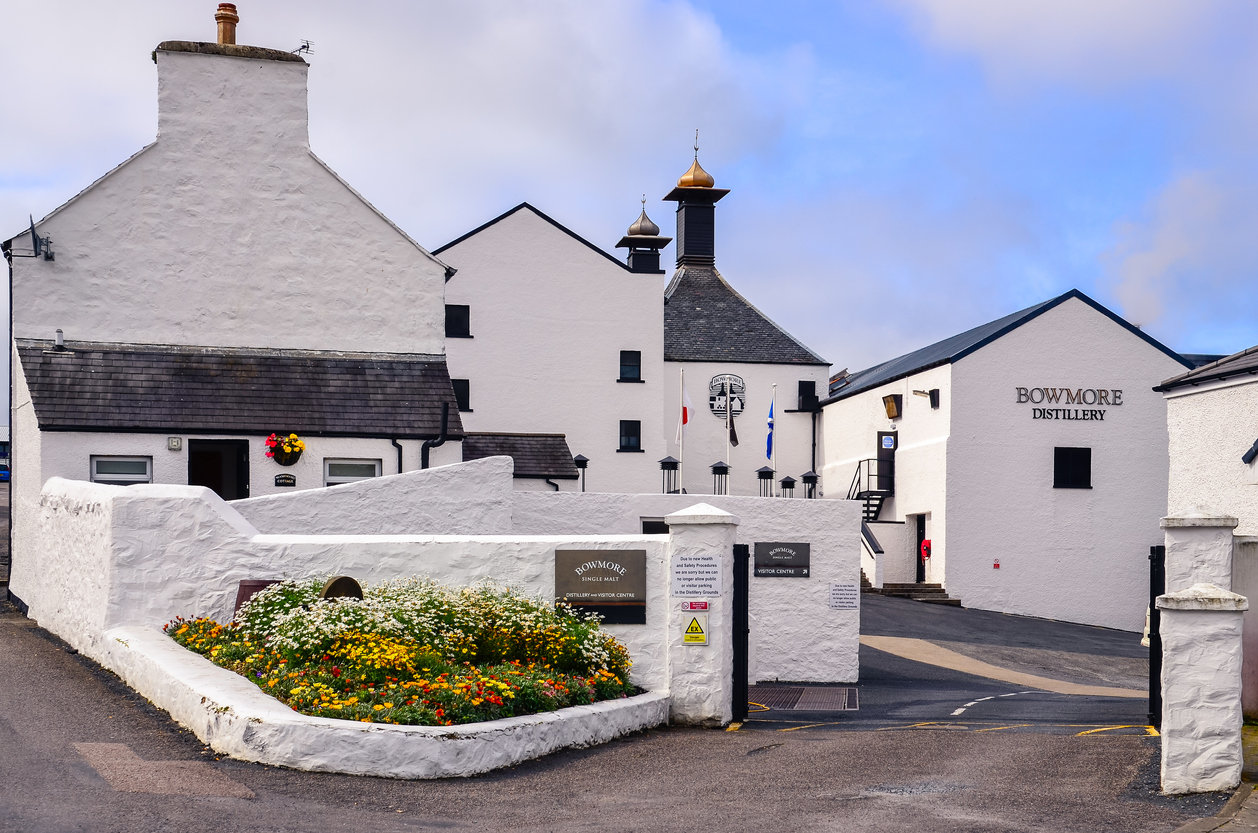CHEERS | spirits

for Peat’s sake
It’s been likened to sitting around a smoking campfire or even the aroma given off by a dirty ashtray – but peated whisky evokes strong reactions from its fans as well as its detractors.

Islay, an island off the rugged west coast of Scotland, is the heartland of peated whisky. It’s almost a place of pilgrimage for whisky smoke heads who chase the big phenols associated with the island’s drams.
Between the 1770s and 1881 the number of distilleries on this famous island was static. There were eight of them: Bowmore, established in 1779, Ardbeg and Laphroaig in 1815, Lagavulin a year later in 1816, Port Ellen (1825 but closed in 1983), Caol Ila in 1846 and then Bunnahabhain and Bruichladdich in 1881. But then along came the so-called “farm distillery” Kilchoman in 2005 and Ardnahoe in 2017.
The Port Ellen distillery, owned by Diageo and mothballed 40 years ago, has undergone a major renovation of late and is due to open for business again later this year or in 2024, depending on progress. On the southern coast of Islay, between Port Ellen and Laphroaig, yet another, Portintruan, has been constructed with the first spirit set to run from the stills in 2024.
Two local men, Mackay Smith and Donald McKenzie also announced that they are building a brand new distillery opposite Islay’s small airport at Glenegedale. Laggan Bay distillery will be the home of their new Islay Boys whisky brand as well as their brewery, Islay Ales which they took over in 2018.
All of this is indicative of not just the continuing boom in whisky generally but the specific interest in peated whisky. Islay, like many parts of Scotland, has a plentiful resource of peat, the rich organic substance that is made up of grass and sedges which have decayed in swampy, boggy conditions over millennia. Once cut and dried, these organic bricks were used as fuel source and were responsible for the island’s whisky’s distinct smoky flavour when used in malting barley.
However, the biggest challenge facing all these producers is the one thing that sets their spirits apart: the use of peat.
Peat, the wetland soil, isn’t only used in whisky-making. As mentioned, crofters or farmers have burned it instead of wood or coal for hundreds of years. Gardeners the world over will all have used peat compost or moss when potting plants at some point.
Yet peat is something of a hot topic as climate change intensifies. This past summer in the northern hemisphere, record temperatures have been recorded all over Europe as well as in North America. Scientists have been ringing alarm bells for years but with extreme weather events becoming more and more common and the consequent destruction more intense, the importance of carbon dioxide levels is critical. And peat stores something like 30% of the world’s soil carbon while peatlands only comprise 3% of the planet’s landmass. That’s twice as much carbon as all the Earth’s forests…
A professor in ecosystems and biogeochemical cycles at the University of Exeter, Professor Angela Gallego-Sala was quoted by Liquor.com as saying that there are about 3 billion metric tons of carbon stored in peatlands in the UK alone. “About the same as all the forest in France, Germany and the UK combined.”
While peat usage in whisky is small compared to that used in horticulture, the whisky fraternity is very aware of the problem and is proactively involved in finding solutions. The Scotch Whisky Association (SWA) has partnered with Scotland’s national Peatland Plan. The intention is to find more sustainable ways of producing whisky with the goal being to ensure the industry reaches net zero carbon emissions by 2035.
One small but effective change in methodology is to use peat more efficiently by milling it rather than removing bricks or chunks of it from peat bogs. There is also work being done to find alternatives to it, as well as funding restoration and conservation of sensitive areas.

As the website Liquor.com reported, Beam Suntory, owner of Laphroaig, Bowmore, and Teacher’s, launched an initiative to preserve and reinvigorate peatlands. “Called the Peatland Water Sanctuary Initiative, the $4 million investment will go toward restoring and conserving 1 300 hectares of peatlands by 2030.” The goal is to have restored enough peatlands by 2040 to total twice the volume of peat the company uses to make its scotch whiskies.
Similarly, one of global liquor giant Diageo’s most prominent brands, Johnnie Walker, has combined with the Royal Society for the Protection of Birds (RSPB) to work towards regenerating peat and supporting rare plants and wildlife. In addition to moving all its distilleries to renewable energy and using at least 60% recycled glass for its main bottles by 2030, the brand pledged to restore around 88 hectares of heavily degraded peatland in Scotland.
The director of industry and sustainability at the Scotch Whisky Association, Ruth Piggin, said good progress had already been made towards sustainability targets in the past decade. “The industry uses a very small amount of peat from a handful of sites in Scotland, solely for giving the barley a distinctive smoky flavour profile during the malting process.”
Whisky producers have already been able to reduce the volume of peat used to malt barley without sacrificing the end product’s distinctly smoky flavours – and one more potential method being considered was the use of peated barrels!
There’s no doubt that in the years to come, new distilleries might well innovate and come up with novel solutions to the dilemma of peat usage while still maintaining the unique flavour so distinctive in this spirit.











